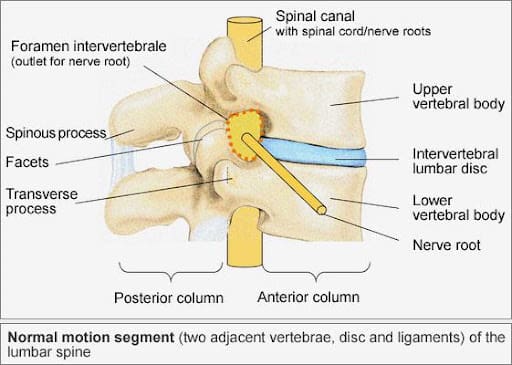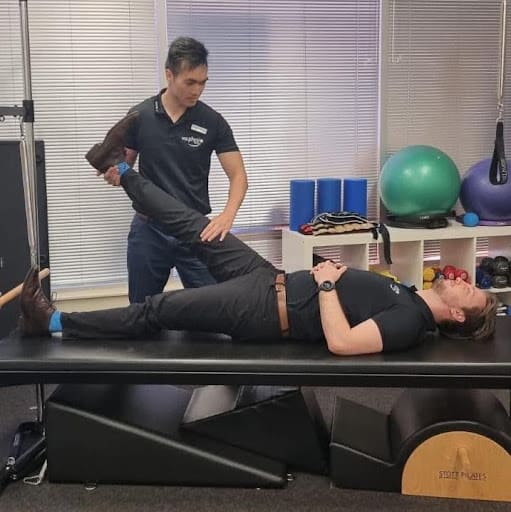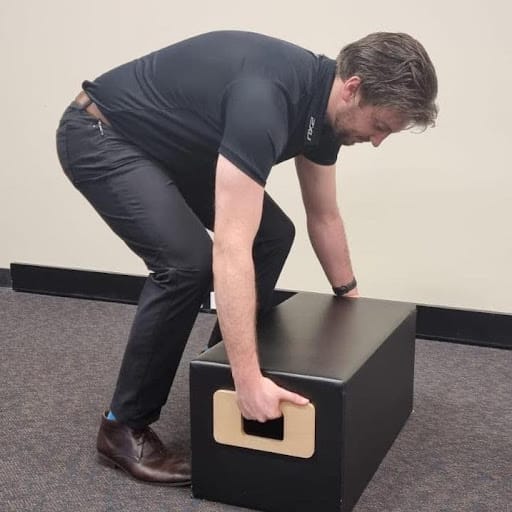About six weeks ago I had the pleasure of experiencing sciatica myself for the first time, dealing with it personally was an incredibly educational experience so I thought why not write a blog on what it is and how I dealt with it.
What is sciatica?
- Sciatica is pain related to the sciatic nerve which supplies sensation and power to the back of the thigh, lower leg and foot.
- When the nerve or nerve roots that become the sciatic nerve become irritated and inflamed. it can start referring symptoms such as pain, pins and needles, numbness and burning sensations.
- If there is compression at some point along the nerve you may also experience changes to reflexes and decreases in muscle strength.
- Large amounts of the population who don’t have any symptoms may have changes to the discs in the spine or other structures where there is compression on the nerve roots or sciatic nerve so compression alone often doesn’t cause problems.
- Sciatica generally has a very good prognosis and will usually resolve given enough time and often won’t require medical imaging such as an MRI.
- If there is ongoing loss of reflex and strength which doesn’t resolve or worsens then imaging and onwards referral is indicated, but your GP or physio can help you identify this (these cases are the minority).
- Pain radiating from the back into the leg isn’t always from a nerve, a good assessment can help identify this.

What happened with me?
I was living life quite normally and was trying to increase the amount of exercise I was doing and instead of intelligently increasing the amount gradually overtime I got very motivated and doubled the amount I was doing over two weeks. This was combined with two weeks of increased mental stress and poor sleep.
After a particularly intense session I had an achy back afterwards which isn’t abnormal and usually will go away with some stretching. On this occasion it was more intense and worsened with stretching, given it was late at night I decided to go to bed expecting it to be better in the morning.
The next morning when I got up I noticed the pain was more intense and had started to move into the back of my hip, the more I moved the better it got so I wasn’t overly worried. The third day was very different, the back pain had resolved but there was a 10/10 sharp pain which went from the outside of my right hip down my leg and into the outside of my right foot. This felt absolutely rubbish but once again it got better the more I moved and responded well to some Panadol and neurofen. I did notice that any time I got up after sitting, even for a minute, the pain was very severe when walking for about 10 steps. Given I was busy at work and all the other physio’s were as well I didn’t get anyone to assess me as I was already able to get some pain relief and soldier on to the weekend.
The first few days was a bit confusing as I hadn’t been able to come up with a diagnosis for why I had the pain but I eventually worked out I likely had an inflamed right L5 nerve root as I had pain in the area it supplies sensation to. I also checked the strength in my leg which was all normal so I excluded the possibility of a disc bulge.
I continued exercising because movement improved symptoms but exercise duration and intensity mattered, if I went to long or too hard I definitely suffered more in the few hours after and the next day. By day 7 I started to find a movement that was very relieving, which was leaning to my left which mechanically made sense as it opens the space around the nerve roots on the right. This was relieving most of the time but sore nerves can often act a bit weird and the pain occasionally changed how it wanted to behave which was very frustrating and concerning, but also interesting as I hadn’t had a patient tell me this before (I have asked this to relevant patients since and it does seem to be a common experience).

As time went on I was improving so by day 10 I went to training for Brazilian Jiu Jitsu which was good and I was able to do exercises before and got to a point where there was no pain. The session was 90 minutes total and I was feeling good until the 60 minute mark where my hip complained a bit but I ignored it and sparred because I was mostly feeling good and moving well. This was silly and for the next 3 days I was really suffering, we don’t always follow our own advice.
The main change was increased intensity of pain, strength was normal and sensation was normal so I wasn’t worried I’d made things worse. I kept going with my stretching, Panadol and neurofen and started to see things improve of the next few days. Eventually the pain started to retreat back up towards my hip and eventually became an ache in the hip which was very tolerable. With some self trigger-pointing, normal exercise and stretching this issue eventually resolved.
Overall it took about four week from its onset to resolve which is normal for this issue. If I had involvement with the disc it might have added another two to four weeks onto the problem.
The main things that helped me through the issue were:
- Getting a diagnosis (the few days of not understanding what was happening were tough)
- Reminding myself it will get better in two to four weeks
- Finding ways to decrease my pain in the short and medium terms (medications, stretches, movement)
- Maintaining as much of a normal routine as possible (going to work, exercising, socialising)


Having an understanding of how to treat the issue as a physio was very helpful through the process and meant I never had to get anyone else to assess me, but if it was bad enough or I couldn’t work it out myself (self assessing is sometimes very difficult) I would have seen a colleague.
If you do suspect you have sciatica going to see your GP or a physio is a great start to help you determine what is happening and finding out how you can best manage the symptoms and work towards a resolution.
Author

Rourke Moynihan
Senior Physiotherapist
Rourke is a graduate of the University of Notre Dame with a Bachelor of Physiotherapy.
Rourke has recently joined the team at Bassendean Physiotherapy after working at private physio practices in Perth and also when travelling around Australia, which has included stints in practices in Tasmania and Arnhem Land. Adding to his experience, he has had the opportunity to work with various sporting teams, including Perth Heat Baseball, East Perth Football Club and the AFL WA Women’s State Football team.
Outside of work, Rourke is involved in a number of sports including cycling, hockey and rowing.
More recently he has taken up Brazilian Jiu Jitsu and enjoying the opportunity to personally test his own rehab methods.
Special Interests:
Rourke is also qualified in Dry Needling and Pilates.
Foot/ankle
Knee
Headaches

